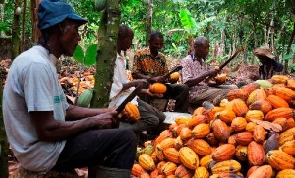 Ghana's cocoa sector single-handedly is acclaimed to be the country
Ghana's cocoa sector single-handedly is acclaimed to be the country
There is no denying that Ghana’s economy heavily relies on the agriculture sector.
The sector single-handedly is acclaimed to be the country’s biggest employer – offering a means of livelihood to millions in the agriculture value chain.
But despite its important role, not quite much has changed in terms of the structure of the sector. In recent years, several policies have been implemented to encourage some form of commercial farming in order to maximise the benefits inherent in the sector.
The 2017/18 Ghana Census of Agriculture (GCA) revealed that agricultural activities in the country still remain rural and rudimentary with little innovation and modernization which is even made worse by an aging farmer population.
One telling effect of this is that the contribution of the sector to the economy would continue to shrink. Since 2013, the sector’s contribution to the economy has remained below 26 percent, with the latest being 23.3 percent in the third quarter of 2020.
Indeed, to achieve any significant difference in terms of results, the current modes of operation and characteristics of the persons and institutions engaged in agriculture must see a complete overall.
Just as the Government Statistician Prof. Samuel Annim when he disclosed the results of the survey, there has to be a strategy to attract the youth, especially those with tertiary-level education, among whom unemployment is high and who the census shows have low participation in agriculture.
He recommended tackling some issues, such as the adoption of new technologies, low productivity in agriculture, lack of resources, among others, that have plagued the agricultural sector in order to attract more people and investments into agriculture.
The country is endowed with arable lands that it must actively exploit if we are to feed ourselves and generate sizeable foreign exchange from the export of agriproducts.